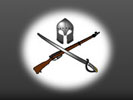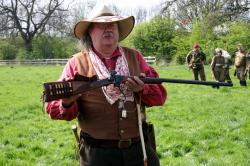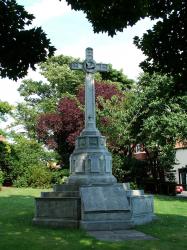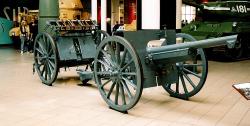Translate this Page
Lansdown
Battle Name : Lansdown
Date(s) : 05 July 1643
Part of : The Civil Wars of the Three Kingdoms , The 1st English Civil War ,
Outcome : A victory for Royalist Forces over Parliamentarian Forces
Type of battle : Land
Summary
Ralph Lord Hopton fought and gained a strongly defended position of Sir William Waller managing to keep the field after dark, Waller falling back on Bath.
Location
Landsdown Hill, 5 miles north of Bath (England)
More details
Waller, guesing that Hopton was to attack Bath, fortified the southern approaches to the City, but when the Royalists went round, to avoid the Avon and attack from the north, Waller marched his troops out the Landsdown Hill to meet them.
He took up position on the crest of the ridge, his flanks anchored in woods either side of the road, with breastworks built up between.
On the approach of the Royalists, after some brief skirmishing between cavalry piquets Hopton surveyed the position. Judging it to be too strong, he turned the line about and gave orders to withdraw.
Seeing this Waller decided to make issue, and sent Burrel and 1,000 Cavalry and Dragoons to pursue. They attacked the readguard and inflicted heavy casualties on the retreating Royalist horse, but the Cornish infantry stood firm, with the muskteers clearing the Dragoons from the hedges and holding position long enough for Hertford's Lifeguard to return to their aid. Soon the Parliamentarian forces were forced back to their original positions, but this time the Royalists begged to be permitted to continue the attack. This Hopton decided to permit.
Musketeers advanced through the woods on either flank while the horse and pikes advanced up the middle (a reverse of the usual formation) and while the foot on the flanks gained the crest in good order, the horse and pike in the centre suffered much from the guns and muskets behind the breastworks. Parliament fell back from the crest to a position some hundred yards further back and perhaps a stout counter-attack could have dislodged the Royalists from the hard-won hill, but the fight was gone and, during the night, Waller retreated to Bath.
The action was particularly notable fot the dogged courage of Sir Beville Grenville's Cornishmen, who not only held position early in the engagement but fought with great tenacity when taking the hill. It cost Grenville his life.
Following the battle, an ammunition wagon, supposedly also transporting prisoners who were smoking, blew up and appart from destroying a large part of the remaining powder also badly wounded Sir Ralph Hopton himself, making him unable to take a full part in the actions to come.
When visiting the battlefield today, a monument to Sir Beville Grenville stands on the top of the hill roughly at the centre of the action, and the hills dominant position overlooking Bath can be easily seen. There is little else to indicate the site of the battle, and much is now private land but Hoptons early decision not to attack Waller's redoubts can be well understood if you view the position, as he did, from Freezing Hill across the gully. The terrain makes the eventual Royalist victory more remarkable.






